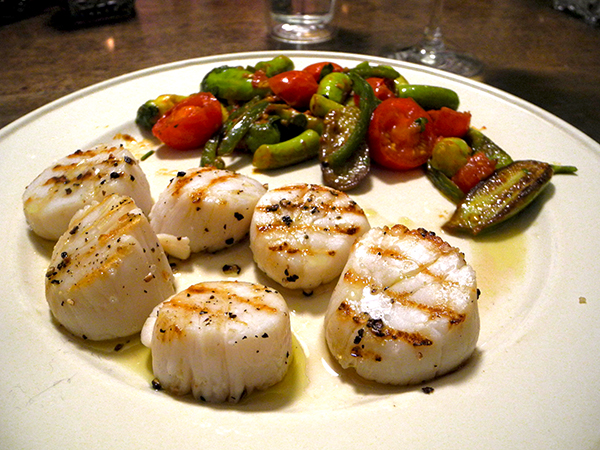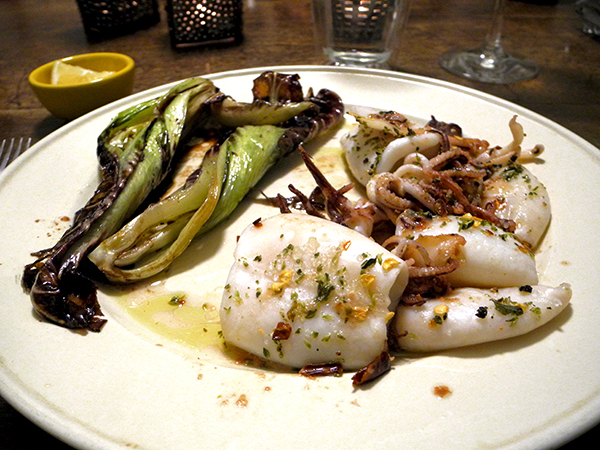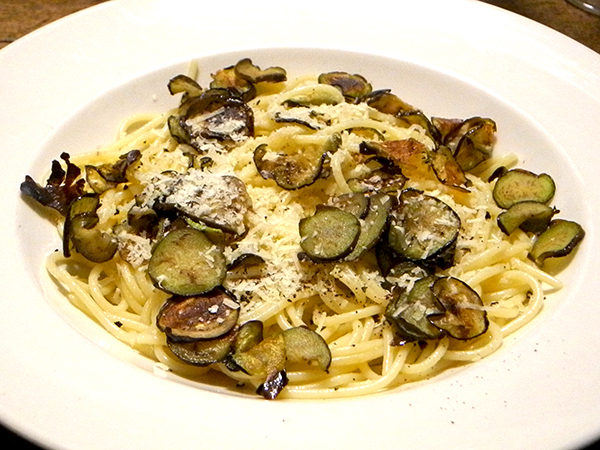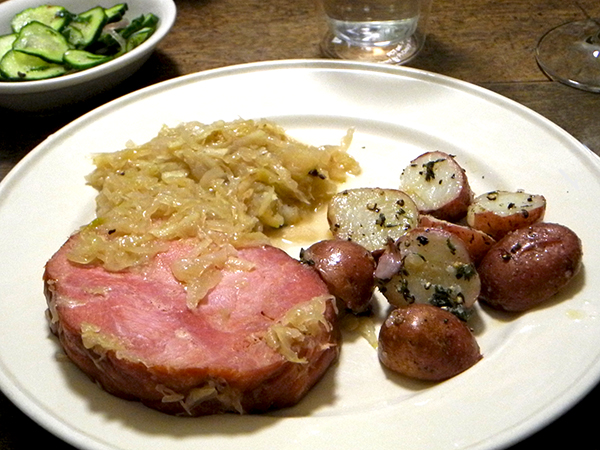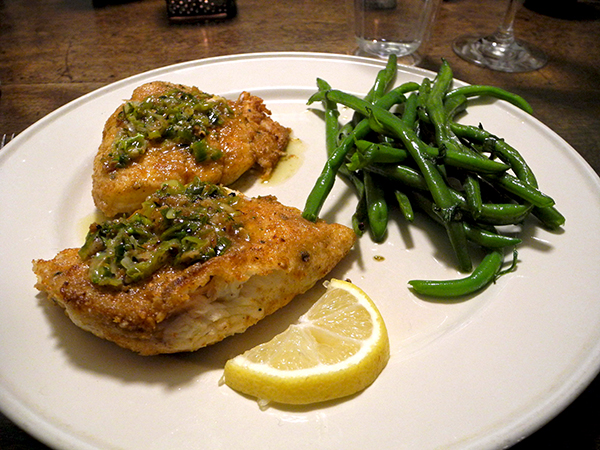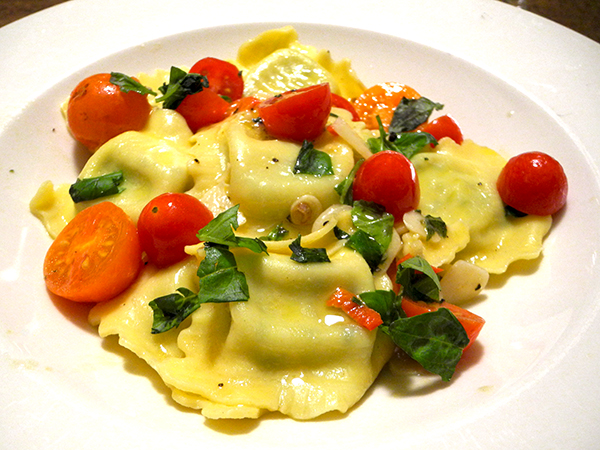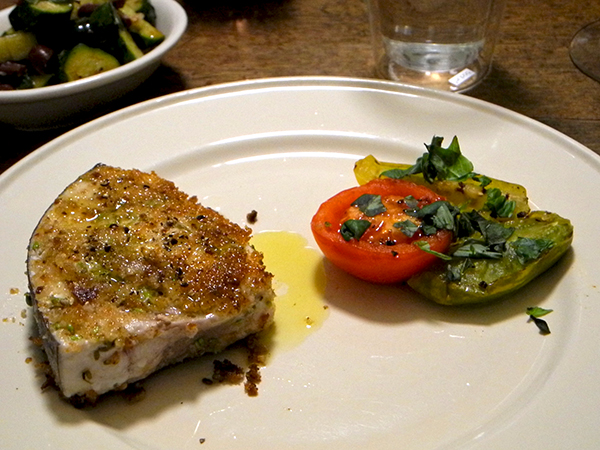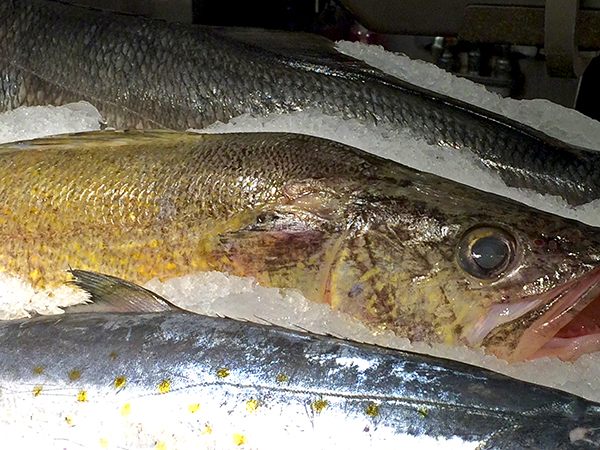
it’s called a ‘walleye’ (they also sell it whole, here Spanish mackerel below, bluefish above);
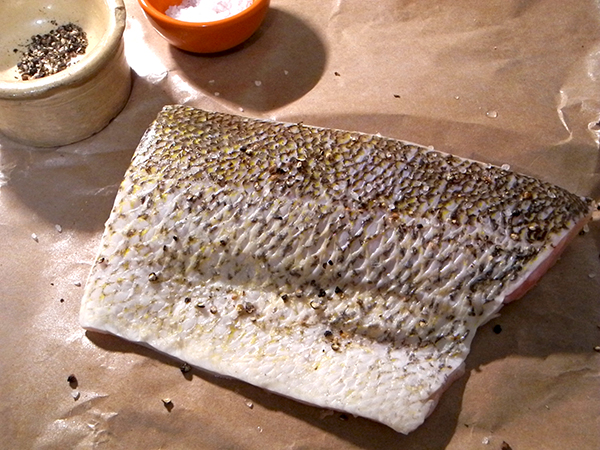
on our kitchen counter, seasoned, ready to be floured;

and on the plate.
It’s a wonderful fish.
While growing up in Michigan and Wisconsin, I thought of the walleye, or ‘walleyed-pike’, or just ‘pickerel, as a very big thing, virtually the subject of fable, and not just because Algonac, where our turn-of-the-20th-century porched cottage sat on the St. Claire River, is the home of the nonpareil Algonac Pickerel Tournament [slideshow of 1949 parade here]. To tell the truth, I was actually always much more excited by the scary Muskellunge, or ‘Muskie’. It was a catch which might have been more elusive, but their angry bared-teeth heads were everywhere, mount-it-yourself trophies hung above the garage doors (or in dens) of successful pursuers, much like the antlers which land hunters, who also sought out size (numbers of ‘points’ on ‘racks’), still display to invite the admiration of their peers.
But me, I stuck with perch and sunfish.
That’s the background for my excitement five years ago when I found, while visiting The Lobster Place, a small sign for and display of beautiful white fillets of ‘pike’, specifically, ‘wild West Virginia pike’.
Looking on line, I’ve just learned that the Chain Pickerel [Esox Niger], so named because of its scale figuration, is an eastern variant of the pickerel, found in all kinds of waters, in West Virginia probably most notably in the main channel of the Ohio River. It seems that it was this pike that I first took home from The Lobster Place.
Lately the Chelsea Market shop has been showing pike labelled, ‘wild: Great Lakes’. The fish guy told me he thought it came from Wisconsin waters, but he wasn’t certain. For sure I can go with Wisconsin; it’s where my parents’ families have lived for nearly 200 years, and Grandfather Wagner’s farm there bordered Lake Michigan; it’s also where I spent parts of many summer vacations (when we were not in Algonac),
The American pike is very close to the European ‘zander‘, or ‘pike-perch’, which we’ve enjoyed as very special treats in Germany.
Last night we enjoyed it at home in Chelsea.
- pike fillet from The Lobster Place, prepared more or less as Badischer Grashecht mit Speck gebraten (Baden Zander with Speck), a recipe I found, described in “Culinaria Germany” It asks for the fish (whole, in the book) to be seasoned and lightly-floured, sauteéed on both sides at high heat in clarified butter (I used olive oil and butter in combination), removed to a buttered pan and placed in a 350º oven for 10 minutes covered by thin slices of ‘streaky bacon’ (I substituted Guanciale from Buon Italia), followed for another 10 minutes with the addition of a small finely-chopped yellow onion from a friend with a garden in Garrison, New York, sprigs of thyme (I substituted fresh fennel seed this time) and white wine, after that the “bacon” is removed and the fish dotted w/butter, returned to the oven until the skin is crispy, and served with the cooking juices spooned over the fillet
- small boiled Norland Red new potatoes from Berried Treasures Farm in the Union Square Greenmarket, finished with butter and parsley from Keith’s Farm
- yellow flat pole beans from Norwich Meadows Farm, blanched, drained and dried, then reheated in a little butter, seasoned with salt and freshly-ground black pepper
- the wine was a German (Pfalz) white, Becker Family Pinot Blanc, 2013, which Appellation Wines was kind enough to special order for us when we asked, having enjoyed it very much at our local excellent ‘Swiss brasserie’, Trestle on Tenth
- the music was Mahler’s 6th symphony, Valery Gergiev conducting the London Symphony Orchestra

